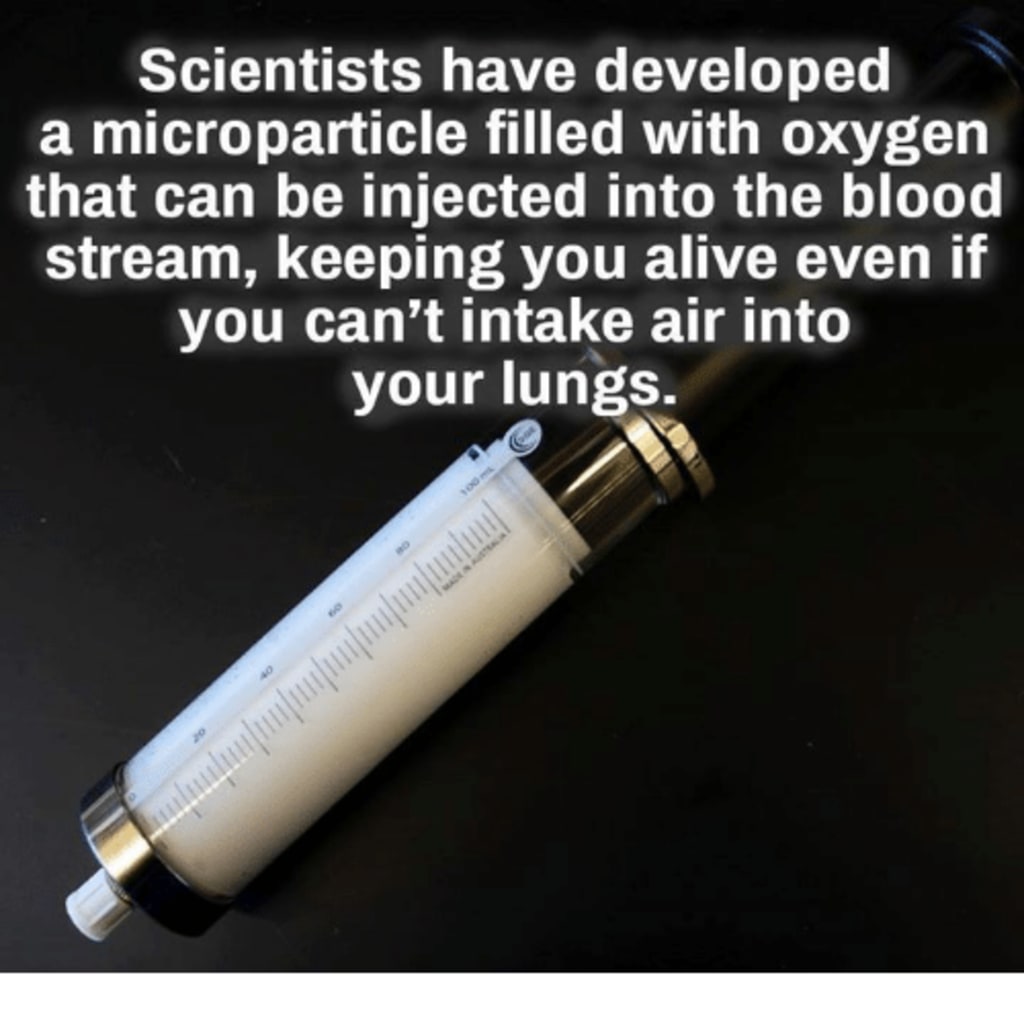Microparticle filled with oxygen
Encapsulating oxygen

A microparticle filled with oxygen can be created through a process called encapsulation. Encapsulation involves enclosing a substance within a small container, in this case, a microparticle. There are several methods for encapsulating oxygen, including physical encapsulation, chemical encapsulation, and biological encapsulation.
Physical encapsulation involves trapping the oxygen within a physical barrier, such as a membrane or a polymer. This method is often used to create oxygen-filled microparticles for medical applications, such as oxygen-carrying blood substitutes or oxygen-delivery systems for wound healing.
One method of physical encapsulation is called solvent evaporation. This involves dissolving a polymer, such as polyvinyl alcohol, in a solvent, such as water. Oxygen gas is then bubbled through the solution, causing the polymer to form a microparticle around the oxygen bubbles. The solvent is then evaporated, leaving behind a microparticle filled with oxygen.
Another method of physical encapsulation is called emulsion. This method involves mixing a liquid, such as oil, with oxygen gas, creating an emulsion. The emulsion is then passed through a small nozzle, creating small droplets of the oxygen-filled liquid. These droplets can then be hardened, forming microparticles filled with oxygen.
Chemical encapsulation involves chemically bonding the oxygen to the walls of the microparticle. This method is often used to create oxygen-filled microparticles for industrial applications, such as catalysts or oxygen storage materials.
One method of chemical encapsulation is called sol-gel. This method involves mixing a precursor, such as a metal oxide, with a solvent, such as water. Oxygen gas is then bubbled through the mixture, causing the metal oxide to form a gel. The gel is then dried, forming a microparticle filled with oxygen.
Biological encapsulation involves using living cells or organisms to create microparticles filled with oxygen. This method is often used to create oxygen-filled microparticles for environmental applications, such as oxygen-producing biofilms or oxygen-releasing algal blooms.
One method of biological encapsulation is called immobilization. This method involves trapping living cells or organisms within a gel or a matrix. The cells or organisms are then able to produce oxygen within the microparticle.
In conclusion, microparticles filled with oxygen can be created through a process called encapsulation. There are several methods for encapsulating oxygen, including physical encapsulation, chemical encapsulation, and biological encapsulation. Each method has its own advantages and disadvantages and is suitable for different applications.
Encapsulating oxygen involves enclosing it within a small container, such as a microparticle, in order to control its release and use. There are several methods for encapsulating oxygen, each with its own advantages and disadvantages.
One method is physical encapsulation, which involves trapping the oxygen within a physical barrier, such as a membrane or a polymer. This method is often used to create oxygen-filled microparticles for medical applications, such as oxygen-carrying blood substitutes or oxygen-delivery systems for wound healing.
One example of physical encapsulation is solvent evaporation, which involves dissolving a polymer, such as polyvinyl alcohol, in a solvent, such as water. Oxygen gas is then bubbled through the solution, causing the polymer to form a microparticle around the oxygen bubbles. The solvent is then evaporated, leaving behind a microparticle filled with oxygen.
Another example of physical encapsulation is emulsion, which involves mixing a liquid, such as oil, with oxygen gas, creating an emulsion. The emulsion is then passed through a small nozzle, creating small droplets of the oxygen-filled liquid. These droplets can then be hardened, forming microparticles filled with oxygen.
Chemical encapsulation is another method, which involves chemically bonding the oxygen to the walls of the microparticle. This method is often used to create oxygen-filled microparticles for industrial applications, such as catalysts or oxygen storage materials.
One example of chemical encapsulation is sol-gel, which involves mixing a precursor, such as a metal oxide, with a solvent, such as water. Oxygen gas is then bubbled through the mixture, causing the metal oxide to form a gel. The gel is then dried, forming a microparticle filled with oxygen.
About the Creator
Gajendira Kumar
I am Not a Legend I am the Lengends Maker by GAJAJI
Content Creator
Future Technology






Comments
There are no comments for this story
Be the first to respond and start the conversation.